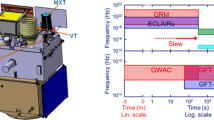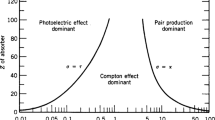Abstract
Since the AGILE and Fermi launch, the synergy between gamma-ray experiments and other space- and ground-based observatories has been the key to carry out multi-wavelength campaign aimed at understanding the physical mechanisms responsible for the observed gamma-ray emission in astrophysical sources. Blazars are the best examples of astrophysical sources where this strategy has been applied. The big efforts put in place for blazars to obtain coordinated observations with a broad coverage of the electromagnetic spectrum are providing new diagnostics of the physical processes at work in these sources, raising a lot of challenges for the theoretical interpretation. These could be partially solved through further observations with ground- and space-based facilities, therefore requiring new advances in technology and mission profile design. We will discuss how the lessons learned from current \(\gamma\)-ray observatories represent an important heritage for future missions expected to play a crucial role in the understanding of extreme phenomena in the high-energy domain.



Similar content being viewed by others
References
Aartsen MG, Ackermann M, Adams J et al (2018) Multimessenger observations of a flaring blazar coincident with high-energy neutrino IceCube-170922A. Science 361:1378
Aharonian F et al (2009) Simultaneous multiwavelength observations of the second exceptional \(\gamma\)-ray flare of PKS 2155–304 in July 2006. Astron Astrophys 502:749
Begelman MC et al (1987) Inverse compton scattering of ambient radiation by a cold relativistic jet: a source of beamed polarized X-ray and optical observations of X-ray-selected BL lacertae objects. Astrophys J 322:650
Celotti A, Ghisellini G, Fabian AC (2007) Bulk comptonization spectra in blazars. Mon Not R Astron Soc 375:417
De Angelis A et al (2017) The e-ASTROGAM mission. Exploring the extreme Universe with gamma rays in the MeV–GeV range. Exp Astron 44:25
De Angelis A et al (2018) Science with e-ASTROGAM. A space mission for MeV–GeV gamma-ray astrophysics. J High Energy Astrophys 19:1
Donnarumma I et al (2011) The remarkable \(\gamma\)-ray activity in the gravitationally lensed blazar PKS 1830–211. Astrophys J Lett 736:L30
Garrappa S et al (2019) Investigation of two fermi-LAT gamma-ray blazars coincident with high-energy neutrinos detected by icecube. Astrophys J 880:103
Ghisellini G, Tavecchio F (2009) Canonical high-power blazars. Mon Not R Astron Soc 397:985
Halzen F et al (2017) IceCube in the era of multimessenger astrophysics. Mod Phys Lett A 32:1730010
in’t Zand JJM et al (2019) Observatory science with eXTP. Sci China Phys Mech Astron 62:29506
Jorstad S et al (2006) Multifrequency polarization properties of blazars. Chin J Astron Astrophys Suppl 6:247
Krawczynski H (2012) The polarization properties of inverse Compton emission and implications for blazar observations with GEMS X-ray polarimeter. Astrophys J 744:30
Lucarelli F et al (2017) AGILE detection of a candidate gamma-ray precursor to the IceCube-160731 neutrino event. Astrophys J 846:121
Lucarelli F et al (2019) AGILE detection of gamma-ray sources coincident with cosmic neutrino events. Astrophys J 870:136
MacDonald NR, Marscher AP, Jorstad SG (2015) Through the ring of fire: gamma-ray variability in blazars by a moving plasmoid passing a local source of seed photons. Astrophys J 804:111
Marsher AP (2014) Turbulent, extreme multi-zone model for simulating flux and polarization variability in blazars. Astrophys J 780:87
Peirson AL, Romani RW (2018) The polarization behavior of relativistic synchrotron jets. Astrophys J 864:140
Pittori C et al (2018) The bright \(\gamma\)-ray flare of 3C 279 in 2015 June: AGILE detection and multifrequency follow-up observations. Astrophys J 856:99
Tavani M, Vittorini V, Cavaliere A (2015) An emerging class of gamma-ray flares from blazars: beyond one-zone models. Astrophys J 814:51
Tavecchio F, Landoni M, Sironi L, Coppi P (2018) Probing dissipation mechanisms in BL Lac jets thriugh X-ray polarimetry. Mon Not R Astron Soc 480:2872
Vercellone S (2019) AGILE and blazars: the unexpected, the unprecedented, and the uncut. Rend Fis Acc Lincei. https://doi.org/10.1007/s12210-019-00818-4
Vittorini V et al (2017) Meeting the challenge from bright and fast gamma-ray flares of 3C 279. Astrophys J 843:L23
Weisskopf MC et al (2016) The imaging X-ray polarimetry explorer (IXPE). Res Phys 6:1179
Zhang SN et al (2019) The enhanced X-ray timing and polarimetry mission–eXTP. Sci China Phys Mech Astron 62:29502
Zhang H, Boettcher M (2013) X-ray and gamma-ray polarization in leptonic and hadronic jet models of blazars. Astrophys J 774:18
Funding
S.V. acknowledges financial contribution from the Grant ASI I/028/12/0 and the agreement ASI-INAF no. 2017-14-H.0.
Author information
Authors and Affiliations
Corresponding author
Ethics declarations
Conflict of interest
The authors declare that they have no conflict of interest.
Additional information
Publisher's Note
Springer Nature remains neutral with regard to jurisdictional claims in published maps and institutional affiliations.
This paper is the peer-reviewed version of a contribution selected among those presented at the Conference on Gamma Ray Astrophysics with the AGILE Satellite held at Accademia Nazionale dei Lincei and Agenzia Spaziale Italiana, Rome on December 11–13, 2017.
Rights and permissions
About this article
Cite this article
Donnarumma, I., Vercellone, S. Perspectives of blazar studies with future space missions. Rend. Fis. Acc. Lincei 30 (Suppl 1), 225–229 (2019). https://doi.org/10.1007/s12210-019-00858-w
Received:
Accepted:
Published:
Issue Date:
DOI: https://doi.org/10.1007/s12210-019-00858-w




